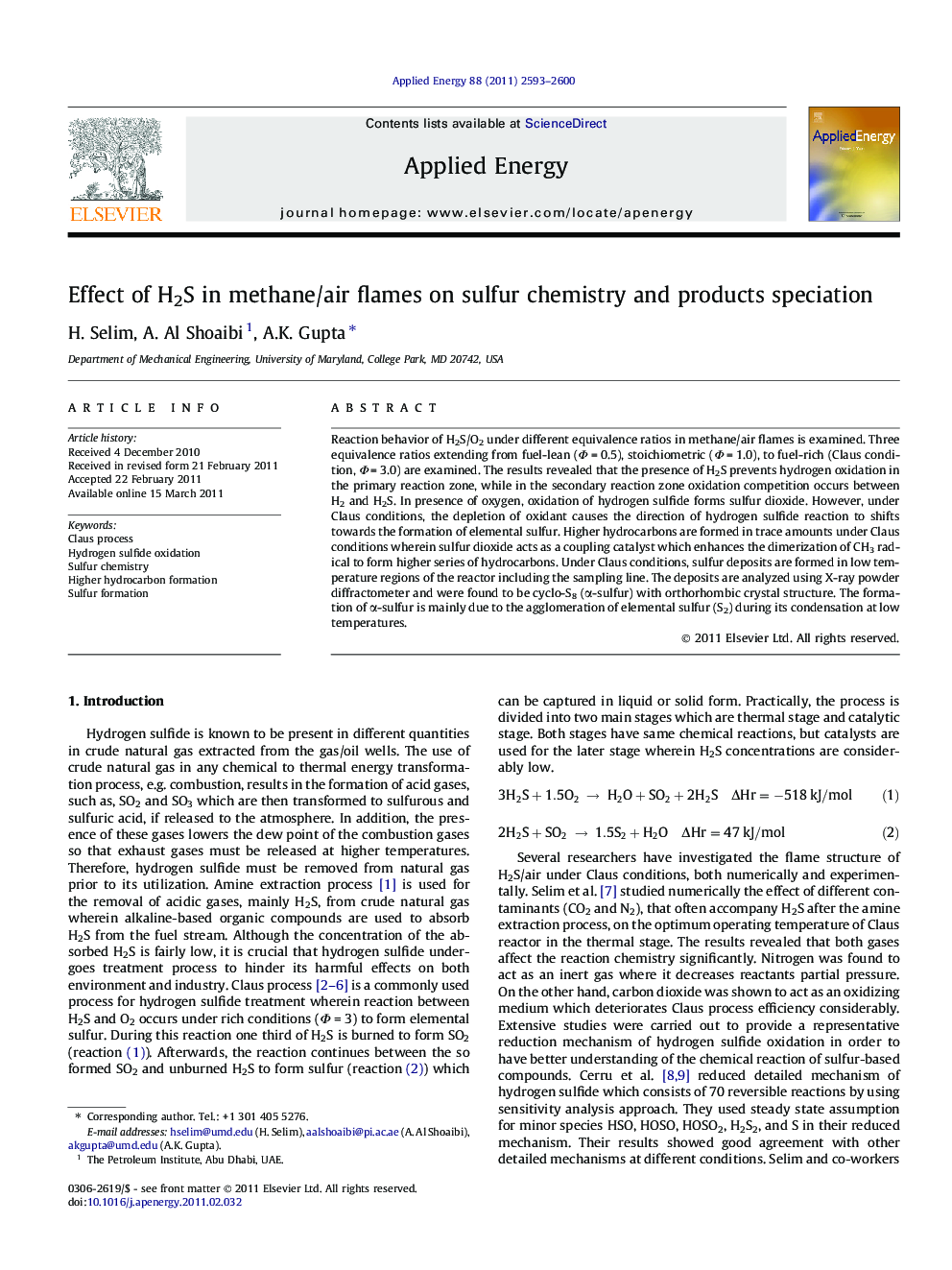| Article ID | Journal | Published Year | Pages | File Type |
|---|---|---|---|---|
| 243802 | Applied Energy | 2011 | 8 Pages |
Reaction behavior of H2S/O2 under different equivalence ratios in methane/air flames is examined. Three equivalence ratios extending from fuel-lean (Φ = 0.5), stoichiometric (Φ = 1.0), to fuel-rich (Claus condition, Φ = 3.0) are examined. The results revealed that the presence of H2S prevents hydrogen oxidation in the primary reaction zone, while in the secondary reaction zone oxidation competition occurs between H2 and H2S. In presence of oxygen, oxidation of hydrogen sulfide forms sulfur dioxide. However, under Claus conditions, the depletion of oxidant causes the direction of hydrogen sulfide reaction to shifts towards the formation of elemental sulfur. Higher hydrocarbons are formed in trace amounts under Claus conditions wherein sulfur dioxide acts as a coupling catalyst which enhances the dimerization of CH3 radical to form higher series of hydrocarbons. Under Claus conditions, sulfur deposits are formed in low temperature regions of the reactor including the sampling line. The deposits are analyzed using X-ray powder diffractometer and were found to be cyclo-S8 (α-sulfur) with orthorhombic crystal structure. The formation of α-sulfur is mainly due to the agglomeration of elemental sulfur (S2) during its condensation at low temperatures.
▸ Combustion of H2S in CH4/air is examined at different mixture ratios. ▸ H2S is transitioned to S2 under controlled oxidation condition in the reactor. ▸ H2S oxidation forms SO2, but with reduced amount of O2 it forms to more favorable S2. ▸ The deposited sulfur on the reactor walls was analyzed and found to be S8 allotrope. ▸ Higher hydrocarbons found in advanced Claus reactor are useful value added product.
